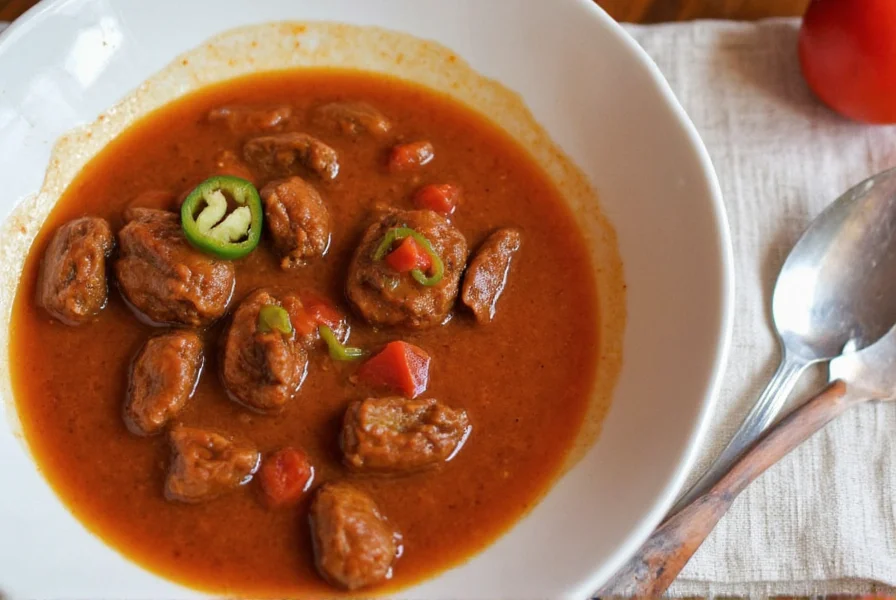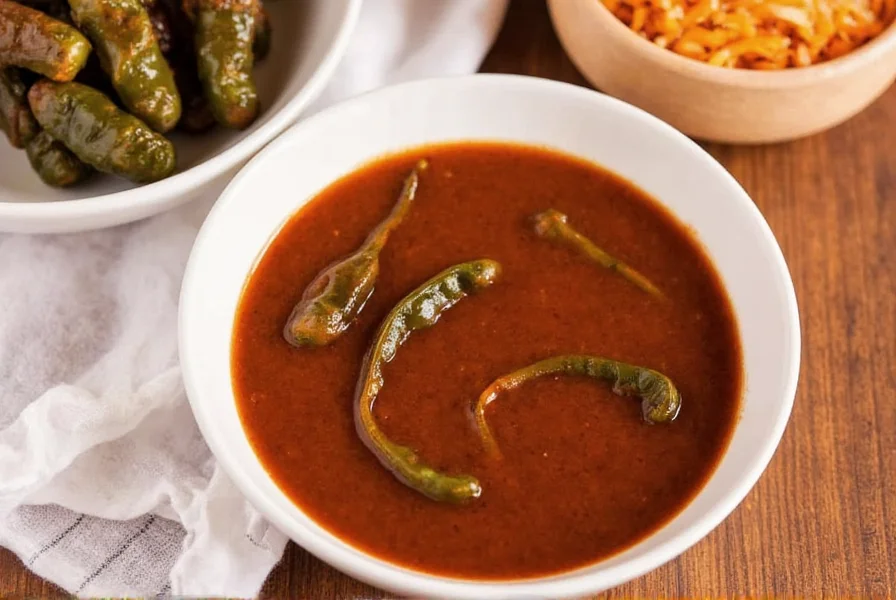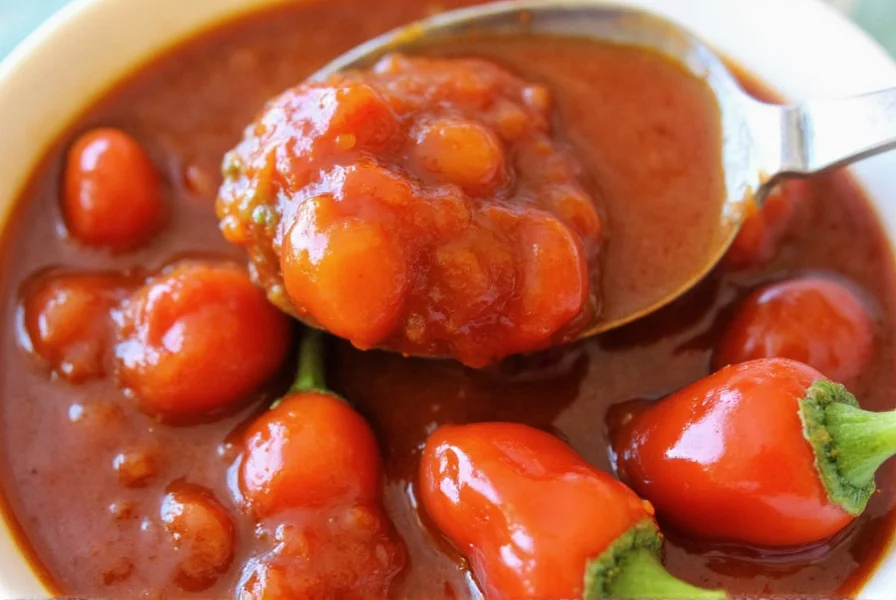Creating chipotle peppers in adobo sauce from scratch transforms your cooking with smoky, complex flavors that surpass store-bought versions. This traditional Mexican preparation combines smoked jalapeños with a rich, tangy tomato-based sauce, delivering depth to everything from tacos to marinades. Unlike commercial products containing preservatives and excessive sodium, homemade chipotle peppers in adobo sauce let you control ingredients and customize heat levels to your preference.
Understanding Chipotle Peppers in Adobo Sauce
Chipotle peppers are smoke-dried jalapeños that provide a distinctive earthy heat, while adobo sauce is a tangy, slightly sweet tomato-based puree traditionally used as a preservation method. The combination creates a versatile condiment that adds complexity to dishes without overwhelming other flavors. Authentic homemade versions contain no artificial ingredients or stabilizers, allowing the natural flavors to shine through.
Why Make Your Own Chipotle Peppers in Adobo Sauce
Commercial canned versions often contain added sugars, preservatives, and inconsistent heat levels. When you prepare homemade chipotle peppers in adobo sauce, you gain several advantages:
- Complete control over ingredient quality and freshness
- Ability to adjust spice level to personal preference
- No unnecessary additives or preservatives
- Superior flavor complexity compared to mass-produced alternatives
- Cost-effective solution for frequent users of this ingredient
Essential Ingredients for Authentic Flavor
The magic of authentic chipotle peppers in adobo sauce ingredients lies in their simplicity and quality. Here's what you'll need:
| Ingredient | Quantity | Key Purpose |
|---|---|---|
| Dried chipotle peppers | 8-10 | Provides smoky heat base |
| Tomato paste | 3 tablespoons | Creates rich adobo foundation |
| Apple cider vinegar | ¼ cup | Preservation and tangy balance |
| Garlic cloves | 3 | Depth of flavor |
| Ground cumin | 1 teaspoon | Earthy warmth |
| Smoked paprika | 1 teaspoon | Enhances smokiness |
| Water | 1 cup | Hydration and consistency |
| Salt | To taste | Flavor enhancer |
Equipment You'll Need
Specialized tools aren't necessary for this how to make chipotle peppers in adobo from scratch process. Gather these basic kitchen items:
- Medium saucepan
- Blender or food processor
- Fine mesh strainer
- Small glass jars with lids for storage
- Heatproof gloves (optional but recommended)
Step-by-Step Preparation Guide
Follow these precise steps for the best method for making chipotle peppers in adobo:
- Prepare the peppers: Remove stems and seeds from dried chipotles. Wear gloves if sensitive to capsaicin. Place peppers in a bowl and cover with boiling water. Let soak for 20 minutes until softened.
- Create the adobo base: In a saucepan, combine tomato paste, vinegar, garlic, cumin, smoked paprika, and water. Bring to a gentle simmer over medium heat, stirring constantly for 3 minutes to develop flavors.
- Blend the mixture: Drain soaked peppers and add to blender. Pour in the warm adobo base. Blend on high until completely smooth, about 2 minutes. Stop and scrape down sides as needed.
- Strain for smoothness: Press the blended mixture through a fine mesh strainer into a clean bowl, using a spatula to extract all liquid. This removes any remaining fibrous bits for a professional texture.
- Final simmer: Return strained sauce to saucepan. Simmer uncovered for 10-15 minutes until reduced to desired thickness. Season with salt to taste.
- Combine with peppers: Place rehydrated peppers in a glass container. Pour hot adobo sauce over them, ensuring complete coverage.
- Marinate: Cool to room temperature, then refrigerate for at least 24 hours before using. This crucial step allows flavors to fully develop and penetrate the peppers.

Proper Storage Techniques
Understanding storing homemade chipotle peppers in adobo sauce properly ensures maximum shelf life and flavor retention:
- Store in airtight glass containers in the refrigerator
- Ensure peppers remain completely submerged in sauce
- Will keep for 3-4 weeks refrigerated
- For longer storage, freeze in ice cube trays then transfer to freezer bags (keeps 6 months)
- Always use clean utensils when handling to prevent contamination
Creative Ways to Use Your Homemade Chipotle Peppers
Mastering using chipotle peppers in adobo sauce in recipes opens countless culinary possibilities:
- Blend into mayonnaise for a smoky sandwich spread
- Add to braised meats during the last 30 minutes of cooking
- Mix into burger patties for depth of flavor
- Stir into soups and stews for complexity
- Create a simple marinade with lime juice and olive oil
- Add to tomato-based pasta sauces for unexpected dimension

Troubleshooting Common Issues
Even experienced cooks encounter challenges with how to make chipotle peppers in adobo sauce. Here's how to solve frequent problems:
- Too spicy: Balance with additional tomato paste and a teaspoon of honey. Remember that heat mellows slightly during the marinating period.
- Sauce too thin: Simmer uncovered for additional 5-10 minutes to reduce and concentrate flavors.
- Peppers too tough: Ensure proper soaking time (20 minutes in boiling water) and consider using younger, less brittle dried peppers.
- Flavor too acidic: Add a small pinch of baking soda (1/8 teaspoon) to neutralize excess acidity without compromising preservation qualities.
- Mold development: This indicates improper storage. Always ensure peppers remain submerged in liquid and containers are sterilized.
Frequently Asked Questions
Can I use fresh jalapeños instead of dried chipotles?
No, fresh jalapeños won't provide the essential smoky flavor that defines chipotle peppers. Chipotles are specifically smoke-dried jalapeños, which creates their distinctive taste. For authentic results, you must use dried chipotle peppers. If unavailable, consider making your own by smoking fresh jalapeños before drying.
How long do homemade chipotle peppers in adobo sauce last?
Properly stored in airtight glass containers in the refrigerator with peppers fully submerged, homemade chipotle peppers in adobo sauce will maintain quality for 3-4 weeks. For extended storage, freeze in portion-sized containers for up to 6 months. Always check for any signs of spoilage before use.
Why does my adobo sauce separate after refrigeration?
Separation occurs naturally as the oils and solids settle. This is completely normal and doesn't indicate spoilage. Simply bring the sauce to room temperature and stir or blend briefly to recombine the components. The texture should return to smooth consistency.
Can I adjust the heat level of my homemade chipotle peppers?
Absolutely. The heat primarily comes from the seeds and inner membranes. For milder peppers, remove all seeds and white ribs before soaking. For extra heat, include some seeds in your blend. Remember that the adobo sauce itself will mellow the heat slightly, so adjust according to your final intended use.
What's the difference between chipotle peppers in adobo and regular chipotle powder?
Chipotle peppers in adobo are whole smoked jalapeños preserved in a tangy tomato-based sauce, providing both texture and complex flavor. Chipotle powder is simply ground dried chipotle peppers without the adobo sauce components. The in-adobo version offers moisture and additional flavor dimensions that powder cannot replicate, making it better for sauces and marinades where liquid content matters.











 浙公网安备
33010002000092号
浙公网安备
33010002000092号 浙B2-20120091-4
浙B2-20120091-4